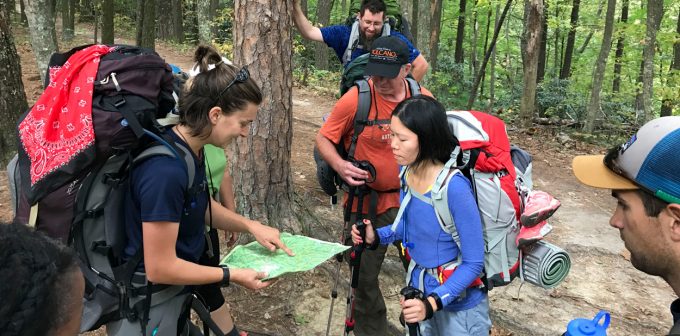Strategic Plan & Master Plans
The future of Five Rivers MetroParks relies on an engaged, active community.

For nearly 60 years, Five Rivers MetroParks has provided the region with high-quality parks, programs, outdoor experiences and facilities. Five Rivers MetroParks appreciates all of the citizens of Montgomery County, who support us with the property tax levy that constitutes the bulk of our funding, and we are committed to being a responsible steward of these funds.
2024–2027 Strategic Plan
In response to the changing economic times, our staff has become more creative and resourceful in diversifying our income stream and conducting business in new, more-sustainable ways. Five Rivers MetroParks also developed a shorter term strategic plan to focus our work and priorities. Together, this allows us to continue our commitment to maintaining the high-quality parks, programs and services that the community deserves. The intent of the plan is to accomplish the following:
1. Establish clear direction for the next four years.
2. Align the organization’s resources with its strategic direction.
3. Focus on community engagement to guide the plan.
4. Drive innovation, leadership and teamwork as part of the organization’s culture.
Completed Park Plans
Master plans will be posted here as they are completed:
- Carriage Hill MetroPark Master Plan | Appendix 1 | Appendix 2 | Appendix 3
- Cox Arboretum MetroPark Master Plan | Appendix
- Eastwood MetroPark Master Plan | Appendix 1 | Appendix 2
- Englewood/Aullwood MetroParks Master Plan | Appendix 1 | Appendix 2
- Hills & Dales MetroPark Site Plan | Appendix 1 | Appendix 2
- Huffman MetroPark Site Plan | Appendix 1 | Appendix 2 | Appendix 3 | Appendix 4
- Medlar Conservation Area Master Plan | Appendix 1 | Appendix 2
- Possum Creek MetroPark Master Plan | Appendix 1 | Appendix 2 | Appendix 3
- Spring Run MetroPark Master Plan | Appendix 1 | Appendix 2 | Appendix 3
- Twin Valley Plans
- Wegerzyn Gardens MetroPark Master Plan | Appendix 1 | Appendix 2 | Appendix 3
2016-2026 Comprehensive Master Plan
Five Rivers MetroParks has developed a 10-year comprehensive master plan to guide the future of its parks, facilities and services and will ensure its resources are aligned with current and future trends, community values and Montgomery County’s changing demographics. Development of the plan began in early 2015 and involved extensive research and community input, including a statistically valid survey, public meetings, interviews, focus groups, intercept surveys and online comments.
“The comprehensive master plan provides direction to Five Rivers MetroParks in serving as the region’s conservation leader, connecting people to nature and active lifestyles, and ensuring Five Rivers MetroParks remains a major source of pride, vehicle for placemaking and an economic catalyst for the region,” said Becky Benná, Five Rivers MetroParks Chief Executive Officer.
“World-class communities have world-class parks, trails, natural areas and park-related attractions,” Benná added. “People who live in world-class communities have a high quality of life, along with diverse opportunities to connect with nature and enjoy active, healthy outdoor lifestyles. World-class communities also understand these outdoor amenities are key to creating the type of vibrant place where people want to live, work and play. Five Rivers MetroParks’ comprehensive master plan ensures Montgomery County is just that type of community.”
Five Rivers MetroParks has been accredited by the Commission for Accreditation of Park and Recreation Agencies (CAPRA). This commission oversees a systematic evaluation of a park agency’s management and operation practices in 10 major categories of best practice standards. It is a quality assurance and improvement process that demonstrates Five Rivers MetroParks’ commitment of excellence to the community and its volunteers, partners and staff.
Indianapolis-based PROS Consulting worked with Five Rivers MetroParks to develop the comprehensive 10-year master plan. The consultant’s top 10 recommendations were:
Stewardship
- Maintain what Five Rivers MetroParks owns
- Preserve land to protect air and water quality
- Protect the value of fish and wildlife habitat
Programming
- Maximize use of parks and facilities through dynamic programming
- Create health and wellness opportunities within parks
Parks and Connections
- Enhance the connections between parks and the urban core
- Link the inner ring of community parks
- Connect urban and community parks to the rest of the region
Finance and Economy
- Position Five Rivers MetroParks as a driver of economic development
- Develop a financially sustainable system that can achieve the vision
Upcoming Park Plans
As the next step in implementing its 10-year comprehensive master plan, Five Rivers MetroParks has developed proposed plans for several parks and conservation areas which will guide park planning and development for the future. These plans were developed based on the feedback we received from the public and other stakeholders involved in the planning process. Several comments that we heard consistently have been incorporated in each of the plans:
- Continue to provide the community with high-quality clean, safe and well-maintained facilities.
- Provide opportunities to connect to nature by offering trails that meet the needs of a variety of ages, interests, and abilities.
- Improve the regional multi-use trail system to link neighborhoods, schools, and workplaces to the MetroParks.
- Continue to improve youth and family-based recreation by providing quality picnic facilities and nature playgrounds.
- Continue conservation efforts that protect open space restore and improve natural habitats throughout the Miami Valley.
- Provide top quality birding and wildlife observation opportunities by providing access to a variety of high quality habitats.
- Improve facilities that support outdoor recreation such as fishing, birdwatching, paddling, horseback riding, and mountain biking.
Planning efforts for individual parks will continue with the development of master plans for each of these locations. The master plans will include operational details for conservation, maintenance, programming, interpretation and public safety.


